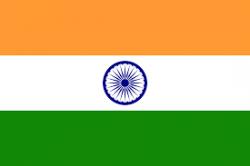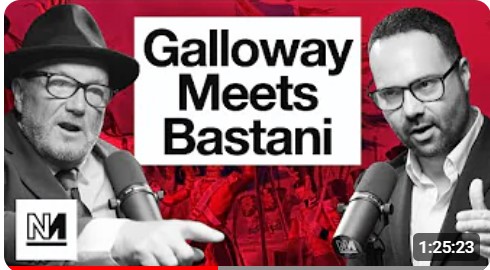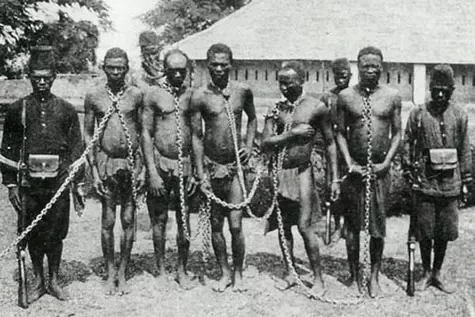By Lal Khan in Pakistan
In the Indian elections of 2019, the Hindutva chauvinist BJP led by Narendra Modi swept to a landslide majority. The so-called NDA (BJP’s coalition with its allied parties) won the world’s most expensive election in a country that has the highest concentration of poverty on the planet. India’s corporate bosses opened up their coffers, pouring billions into the campaign for the BJP’s gigantic electoral machine, even more so than in 2014. Millions of dollars were doled out to the Infotech firms that monopolised social media. Most of the electronic and newspaper corporations owned by ardent supporters of Modi, went on a round-the-clock campaign to bolster the BJP. Votes were bought wholesale of various castes, races, religious minorities and even urban shantytowns and villages. Advertisement companies, organised ruffian gangs, mafias and lumpen elements, mostly unemployed, made fortunes enforcing votes for the rich and mighty, represented by the BJP.
This election result has transformed one aspect of Indian politics: that the BJP appears to have become the traditional party of the Indian capitalist class, just as Congress was in the first few decades after the partition-induced independence. Tycoons and stock exchange manipulators were jubilant as results poured in, with the share index rocketing. The BJP’s manifesto pledged to abolish labour protection laws and ordain extravagant incentives for the capitalists to boost their profits and guarantee protection to the elite’s plunder. The massive investment in infrastructure, including 100 new airports and 50 metro systems were also promised to corporate capital.
However, in his last five-year stint Modi failed to carry out any of its major electoral promises. Modi had pledged to create 20 million jobs annually. However, at the end of his first term in office, the rate of unemployment is the highest in 45 years.
Modi’s image as a moderniser propped-up by tycoons is a myth fostered by hired intellectuals and media anchors. While romatising Modi, they were oblivious to the reality of how filthy India had become under his rule, with sprawling suburbs and shanty towns that stink and have become garbage dumps, making India’s outlook even more horrid. Modi had vowed to purify the Ganges, Hindutva’s holy river, but five years later it remains a stinking and depleted waterway, with unquantifiable litres of sewage and industrial effluents making it one of the most polluted rivers. An environmental disaster is ravaging rural and urban India at a frightening speed.
Corruption seems to be a secondary issue in today’s India, where without it ordinary Indians would be in even greater hardship. Modi and the BJP are drenched in a quagmire of massive corruption scandals. Molestation and rape of women and infants has become a norm in Delhi, which international women’s liberation activists pronounced the “rape capital of the world”. Now the BJP has banned women from entering the Sabarimala temple in Kerala for their physical ‘flaw’ of menstruation.
Assassin of Mahatma Gandhi revered as a ‘patriot’
Modi’s Hindu supremacist character was exposed when in 2002, under his watch as Chief Minister of Gujarat, a pogrom of Muslims took place and more than 2000 were mutilated and slaughtered. But as Prime Minister, he has also proved to be incompetent, narcissistic and intrinsically vicious. Large sections of scholars and academics ran the campaign of Modi’s deification. This in itself exposes the cultural and intellectual decay of India’s contemporary intelligentsia.
The Indian state’s former veneer of secularism has been to a large extent wiped away under five years of the Modi Sarkar, and these election results will further entrench Hindutva chauvinism in the structures of the state and society. Modi, in his victory speech, vehemently ridiculed the ideology of secularism. But taking a closer look, this election has dealt a blow against the capitalist national ideology instituted by the British-grafted founding politicians of the Indian capitalist republic. Pragya Singh Thakur, the BJP’s Lok Sabha candidate who won the electoral contest in Bhopal, had praised Nathuram Godse, the assassin of Mahatma Gandhi’s in 1948 as a patriot. Godse has always had a place in the Hindutva pantheon, and he had been praised in the past also by several BJP stalwarts. Pragya Thakur’s remark was supported by the union minister Anant Kumar Hedge and the BJP MP Nalin Kumar Kateel. Modi’s retractions and explanations for such statements have been deceptive and hypocritical.
The Hindutva ideologues fully justify Gandhi’s assassination and it is not just the fringe groups in the Sangh Parivar no longer advocate the deification of Godse. Millions of Indians voted into power those who celebrated Gandhi’s assassin. Pragya Thakur and the BJP’s victory in India’s elections speak volumes about the demolition process of the state’s ideological foundations. In a country where Mohandas Gandhi, revered as ‘Bapu’, symbolised the Indian state and his picture printed on India’s currency bills for more than seventy years, was desecrated to such ignominy, lays bare the degenerative process of this capitalist state.
Hindustan replaces the former secular state of India
It is the dismal failure of the Indian ruling classes whose forefathers, propped up by the Raj, had vowed to build a modern secular, industrialised, democratic and sovereign India. Nehru’s “tryst with destiny” has proved to be a failure. The India of rich culture and great civilisation has been defeated and instead Hindutva’s Bharat seems to have replaced Hindustan. But the mighty Indian working class has still to give its verdict.
There has been a massive hue and cry by the liberal secularists about the right-wing ideology being imposed on India. In a recent article in the Guardian, Kapil Komireddi wrote: “Worse, democratic institutions have been repurposed to abet Modi’s project to remake India into a Hindu nation… And five years on, we have more than a glimpse of the ‘New India’ he has spawned. It is a reflection of its progenitor: culturally arid, intellectually vacant, emotionally bruised, vain, bitter, boastful, permanently aggrieved and implacably malevolent; a make-believe land full of fudge and fakery, where bigotry against religious minorities is among the therapeutic options available to members of a self-pitying majority frustrated by the prime minister’s failure to upgrade their economic standard of living. In the world’s largest secular democracy, Muslims have been lynched by mobs since Modi came into office for such offences as eating beef, dating Hindus and refusing to vacate their seats for Hindu commuters on crowded trains… Sectarian prejudice has always existed in India. The room for giving it homicidal expression has expanded exponentially under Modi. The Muslims they butchered were not victims of unpremeditated paroxysms of rage but exhibits in an organised campaign to entrench Hindu supremacy. The deification of Modi is the consequence of a crude awakening of many Hindus to their past: a haphazard response to the traumas bequeathed by history, especially the partition of India to accommodate the demands of Muslim nationalism.”
The main vanguard in resisting reaction is the working class
Hindutva’s fundamentalist bigotry poses a serious neo-fascist threat. But it seems that the Modi Sarkar will fail to impose a fascist regime along the lines and intensity of the Hitler regime in Germany and Mussolini’s regime in Italy. The main vanguard in resisting such savagery is the existence of Indian working class, which has not been decisively defeated in a class war. Its potential strength was the power that defied Modi in carrying out his planned “reforms” to undo the labour laws and concessions the working class movement had gained through its past struggles. It also failed to revise the constitution to take away the special privileges granted to India’s only Muslim-majority state, Jammu & Kashmir. Modi Sarkar’s promise to build a temple to the Hindu god Rama in the city of Ayodhya on the site of the Babri mosque demolished by Hindu zealots in 1992, failed to materialise during its first rule. It is easier said than done. Once in power, the obligations of governance don’t always match the extremist rhetoric spouted in public meetings. Modi’s statements after the BJP’s victory on domestic (All-India) and foreign policy (primacy to peace and development in our region) have somewhat already mellowed his belligerent rhetoric.
But it is an indubitable fact that the BJP regime – the RSS’s parliamentary front and government in power – will continue to shift its rhetoric opportunistically, depending on its immediate vested interests. Narendra Modi may be more devious and articulate than Hitler was, but he still apes the Führer in many ways. In his recent biography of Hitler: Ascent, Viktor Uhlrich reveals that “the dictator’s foul-mouthed speeches and opinions were not spontaneous, but came out after careful preparation, precisely designed to gain maximum attention from the media and maximum reaction from the crowds.” Modi’s assertions and outrageous remarks are not quite as impromptu as they are portrayed to be. His dress codes, body language and actions are orchestrated and rehearsed. Authoritarianism and despotism are specific characteristics of this regime. Under the Modi Sarkar, a vindictive leader, party’s vigilante gangsters and state terror spared no effort to crush dissent. But perhaps the most vicious act has been the capturing of state institutions by the Sang Parivar intellectuals and activists during BJP rule.
Military indulge in financial profiteering
Politicians from left to the right ‘in the name of democracy’ rather flagrantly esteemed the election commission since 1952, for its fallaciously-perceived integrity and its alleged independence. Indian capitalism’s nationalism and democracy never had the socio-economic foundations to built transparent institutions to conduct genuine elections. In 2019 it functioned blatantly as an arm of Modi’s BJP, too timid even to issue perfunctory censures of the Prime Minister’s egregious use of bigoted rhetoric. Despite its pretence of patriotism, the Indian deep state and its military have been indulging in financial profiteering, abusing their power in society. Just as elsewhere in the subcontinent, there has been a history of Indian generals extorting kickbacks in arms deals and military-related contracts. Now it has become even more politicised and indulges heavily in the foreign, finance and other policies of the civilian regimes. With its corruption and bias badly exposed, the judiciary plunged into a serious existential threat with its class partiality in favour of the rich and the famous. Other institutions of the state are similarly rotting and viciously repressive.
Poverty and misery stalk the land. During the last five years, the conditions of the farmers, poor peasants, women, oppressed religious minorities, lower-caste people and other deprived and repressed sections of society have suffered under the saffron juggernaut. On election results the mainstream corporate media experts and pundits give the usual reasons: a fractious opposition, Modi’s use of anti-Pakistan rhetoric, the Indian Hindu chauvinism whipped up into a warlike situation through the Pulwama episode and the surgical strikes, etc. In the 2014 elections, Modi’s Hindutva bigoted rhetoric was no less forcefully applied. The slogan of Vikaas (development) was used more fervently since then Modi didn’t bear the burden of the incumbency factor. But this time he relied more on vile religious anti-Muslim and anti-Pakistan demagogy. The difference this time was his strategy to instil more fear and insecurity amongst the masses. The reaction against Pakistan orchestrated by the military strikes was staged to build up Modi’s macho image and boost Hindu supremacy. Hence Modi’s victory is not one of hope and optimism but one of fear and despair, provoking the masses’ instinct for survival. These tactics were effective amongst the more primitive sections of society, particularly the frenzied petit-bourgeoisie (about 350 million), as these classes were already facing financial and social insecurity and decay.
The disarray of the opposition and the failure of the left leadership to put up a militant programme of class struggle and revolutionary change of the system made things rather easy for Modi. The Congress and other secular parties’ leaders also helped the BJP romp home by their appeasement of its confrontational nationalist rhetoric. The Opposition’s campaign on issues like poverty, unemployment and socioeconomic deprivation, without a clear alternative to the BJP, didn’t evoke much response or optimism amongst the masses. Paradoxically, its campaign of a softer version of Hindutva, in response to Modi’s religious gimmickry, proved to be deleterious for their electoral chances.
Failure to improve the living standards of the masses
For a long time, there has been a failure of growth rates to improve the living conditions of the masses, with no alternative to a coercive capitalism on the political horizon. This lack of an alternative has created a vacuum leading to a profound malaise. If not cut across by workers and youth movements, such periods of inertia create a space for reaction. The rise of Hindutva reaction in India is the outcome of this objective condition.
Leon Trotsky explained the character of such historical epochs in the evolution of society. He wrote in 1909: “When the curve of historical development rises, public thinking becomes more penetrating, braver and more ingenious. It grasps facts on the wing, and on the wing links them with the thread of generalization … But when the political curve indicates a drop, public thinking succumbs to stupidity. The priceless gift of political generalization vanishes somewhere without leaving even a trace. Stupidity grows in insolence, and, baring its teeth, heaps insulting mockery on every attempt at a serious generalization. Feeling that it is in command of the field, it begins to resort to its own means.”
However, the history of even post-partition India has seen gallant struggles, revolutionary uprisings and strike waves of the Indian working classes. India has – or at least used to have until recently – some of the largest Communist Parties in the world. However, the policy of the leadership to compromise with “stages” of capitalist democracy, Indian nationalism and its state blunted the working class’ struggles. The Communist Party of India (CPI) and Communist Party of India (Marxist) have no real ideological or theoretical differences. Both subscribe to this theory of ‘two stages’. In the last seventy-two years, several generations of the Indian masses have suffered atrocious capitalist duress. In pursuing this policy, the CPs drowned themselves in electoral politics. Lenin likened this policy to a disease: “parliamentary cretinism”. But even in the parliamentary field, their highest tally of seats as the Left Front was 59 in the 2002 elections. In 2019 they suffered their worst results ever, with only five seats in a parliament of 545.
At a press conference after the result, the CPI (M)’s general secretary Sitaram Yechury said;
“The people of the country have given a decisive verdict in BJP’s favour in this highly-polarised election and it is now time for us to introspect and analyse what went wrong… There are very big challenges ahead regarding the defence of our secular, democratic republic, the institutions of constitutional authority, people’s rights and livelihood issues.”
Secular democratic republic putrefied from within
Karl Marx often quoted Hegel: “Those who don’t learn from history are doomed to repeat it.” ‘Comrade’ Sitaram’s statement yet again emphasises support for the brutal Indian state that has occupied Kashmir and brutalised its population. State terrorism ravages the oppressed across India’s more than 19 states. The secular democratic republic is being putrefied from within by the system it was created to protect, preserve and impose upon the oppressed classes—capitalism. Its socio-economic crusades against the working people of India are excruciating society. The Indian ruling classes have turned to Hindutva’s neo-fascist tactics to crush dissent and pulverise the working classes. The system and the state are deeply infiltrated by religious chauvinist acrimony and virulence. The time to reinvigorate the class struggles is now! The brilliant general strikes by the workers, with hundreds of thousands participating against the Modi Sarkar for three consecutive years every September, have proved beyond doubt that the class struggle is very much alive and kicking in India. The peasant marches display an advanced rural working class rising up to fight the system.
If the traditional CP leaderships fail to grasp this moment, change course and commit to a policy of class struggle, a renewed all-India revolt of the workers, youth, women and other oppressed strata of society will erupt in any case. The unprecedentedly aggressive and vicious neo-liberal policies of this new Modi Sarkar with its enhanced mandate will inevitably provoke a fight back from the Indian proletariat. A spontaneous movement on this vast participation and momentum by the Indian working classes will bypass the traditional leaders, parties and unions. The movement will carve out new leaders and parties in the heat of the class struggle. It will challenge not just the Hindutva regime, but the state and system that are deploying this menace. Such a movement can only succeed by carrying-out a socialist revolution through the irreconcilable class struggle—a victory that shall transform the lives and destinies of the ordinary people in India and throughout the subcontinent.
May 29, 2019
From the Asian Marxist Revew



